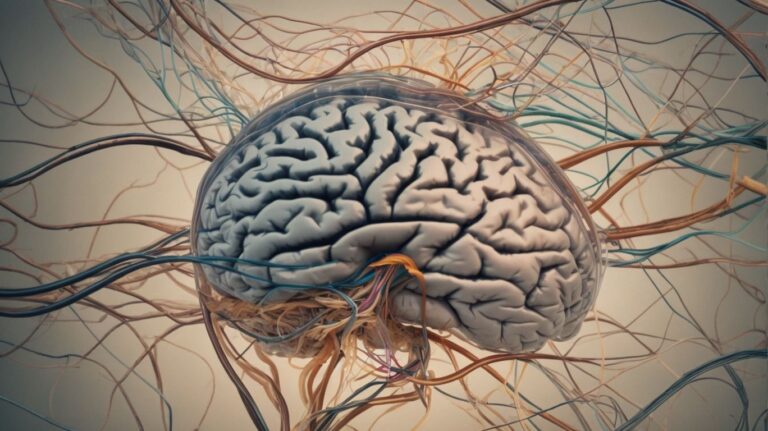Have you ever wondered how psychologists view mental health and approach treatment? The biopsychosocial model offers a comprehensive perspective by considering biological, psychological, and social factors that influence an individual’s well-being.
In this article, we will explore the three components of the biopsychosocial approach, its implications for mental health, benefits in psychology, application in clinical practice, and criticisms. Join us on this journey to understand the holistic nature of the biopsychosocial approach in psychology.
Contents
- 1 What Is the Biopsychosocial Approach in Psychology?
- 2 What Are the Three Components of the Biopsychosocial Model?
- 3 How Does the Biopsychosocial Model View Mental Health?
- 4 What Are the Benefits of Using the Biopsychosocial Approach in Psychology?
- 5 How Is the Biopsychosocial Model Applied in Clinical Practice?
- 6 What Are the Criticisms of the Biopsychosocial Model?
- 7 Frequently Asked Questions
- 7.1 What is the Biopsychosocial Approach in Psychology?
- 7.2 How does the Biopsychosocial Approach differ from traditional approaches in Psychology?
- 7.3 What are the key components of the Biopsychosocial Approach?
- 7.4 Why is it important to understand the whole person in Psychology?
- 7.5 How can the Biopsychosocial Approach be applied in practice?
- 7.6 What are the limitations of the Biopsychosocial Approach?
The biopsychosocial approach in psychology, pioneered by George Engel, is a framework that considers the interconnected influences of biological, psychological, and social factors on an individual’s health and well-being.
Engel introduced this holistic model as a response to the limitations of the traditional biomedical approach, acknowledging the intricate relationship between an individual’s biology, mind, and social environment. The biological aspect delves into the physical aspects of health, including genetics, neurochemistry, and bodily functions, which can impact mental and emotional well-being.
On the psychological front, factors such as thoughts, emotions, beliefs, and coping mechanisms are examined for their influence on health outcomes. The social component takes into account environmental factors like family dynamics, socioeconomic status, cultural influences, and social support networks.
The biopsychosocial model encompasses three key components that shape an individual’s health and experiences: biological factors, psychological factors, and social factors.
Biological Factors
Biological factors within the biopsychosocial model refer to the physiological aspects of health, including genetic predispositions, hormonal influences, and neurobiological processes that impact an individual’s well-being.
These biological elements play a crucial role in shaping a person’s health outcomes, often interacting with psychological and social factors.
Genetic influences can determine susceptibility to certain diseases or conditions, dictating how an individual’s body responds to environmental stressors.
Hormonal fluctuations, such as those related to adrenaline or cortisol, can affect mood, energy levels, and even immune function.
Furthermore, neurobiological processes involving neurotransmitters and brain structures influence cognitive abilities, emotional regulation, and pain perception, contributing to overall well-being.
Psychological Factors
Psychological factors in the biopsychosocial model encompass mental processes, emotional responses, cognitive patterns, and behavioral tendencies that influence an individual’s health outcomes and overall well-being.
These factors play a critical role in shaping how a person copes with stress, adapts to challenges, and maintains relationships.
Emotional responses
can impact physical health through stress-related pathways, while
mental processes
affect perception and interpretation of events.
Cognitive patterns
influence decision-making and problem-solving abilities, directly impacting health behaviors. Understanding these interconnected elements can lead to more effective interventions for various health conditions, by addressing the
psychosocial
aspects alongside biological factors.
Social Factors
Social factors within the biopsychosocial model address the impact of interpersonal relationships, cultural contexts, societal norms, and environmental influences on an individual’s health and wellness.
Biopsychosocial models emphasize the interconnectedness of biological, psychological, and social aspects in understanding health. Social factors play a crucial role in shaping an individual’s attitudes towards illness, access to healthcare, and coping mechanisms. Strong social support networks have been shown to enhance resilience and facilitate better health outcomes. Conversely, social isolation and lack of supportive relationships can contribute to increased stress levels and negatively impact overall well-being. Cultural beliefs and practices influence health behaviors, perceptions of illness, and treatment-seeking patterns, highlighting the importance of incorporating diverse cultural perspectives in healthcare delivery.
The biopsychosocial model provides a comprehensive perspective on mental health, recognizing the intricate interplay between genetic predispositions, environmental influences, and social support systems in shaping an individual’s psychological well-being.
Examining the genetic aspect, the model delves into how hereditary traits can influence susceptibility to certain mental health conditions. It acknowledges that an individual’s genetic makeup can play a significant role in determining vulnerability or resilience to psychological issues.
The environmental component of the model highlights the impact of factors such as upbringing, exposure to trauma, and access to resources on mental health outcomes. Understanding how these external influences interact with genetic predispositions is key to developing effective interventions and treatments.
The social dimension of the biopsychosocial model underscores the importance of social connections, relationships, and societal structures in promoting mental well-being. It emphasizes the role of social support in buffering against stressors and fostering resilience in individuals facing mental health challenges.
The Role of Genetics
Genetics play a crucial role in the biopsychosocial model’s view of mental health, highlighting the hereditary components that contribute to an individual’s psychological predispositions and vulnerabilities.
Within this framework, the interplay between genes and environment is essential in understanding mental health outcomes. Genetic predispositions can influence susceptibility to various mental disorders, such as depression, anxiety, and schizophrenia. These hereditary factors can shape cognitive processes, emotional responses, and behavioral tendencies, affecting how individuals navigate the complexities of life.
Advances in genetic research have shed light on specific gene variations associated with mental health conditions, offering insights into personalized treatment approaches. By recognizing the role of genetics in mental well-being, healthcare professionals can tailor interventions that consider both biological and environmental factors to promote holistic and effective care.
The Impact of Environment
The environment plays a critical role in the biopsychosocial model’s perspective on mental health, emphasizing how external factors such as upbringing, living conditions, and social surroundings shape an individual’s psychological well-being.
Upbringing significantly impacts an individual’s belief systems, coping mechanisms, and emotional regulation skills, laying the foundation for future mental health outcomes.
Similarly, living conditions encompass factors like access to resources, safety, and stability, all of which can either support or hinder mental well-being.
The influence of social surroundings cannot be underestimated, as peer relationships, community support, and cultural norms greatly contribute to an individual’s sense of belonging and overall mental health.
The Importance of Social Support
Social support holds significant value in the biopsychosocial model’s approach to mental health, recognizing the role of interpersonal relationships, community networks, and emotional connections in fostering psychological well-being.
The presence of a strong social support system can act as a buffer against the effects of stressors and adversities, thereby enhancing an individual’s ability to cope with challenging situations. Studies have shown that individuals with close-knit relationships and a sense of belonging tend to exhibit better mental health outcomes and higher levels of resilience.
Within the context of mental health, social support can come in various forms, including practical assistance, emotional encouragement, and companionship. These elements are crucial in providing individuals with a sense of security, validation, and comfort, which are essential for maintaining psychological well-being.
The biopsychosocial approach in psychology offers numerous advantages, including a holistic understanding of individuals, the development of comprehensive treatment plans, and a focus on preventive measures and long-term maintenance of health and well-being.
By incorporating biological, psychological, and social factors, this approach considers the interconnectedness of various aspects influencing an individual’s well-being. It allows psychologists to delve into the intricate relationships between mind, body, and environment, leading to more tailored and effective interventions.
The biopsychosocial approach enables practitioners to create personalized treatment plans that address not just symptoms but also underlying causes and contributing factors. This comprehensive strategy contributes to more sustainable outcomes and enhanced overall quality of life for clients.
Holistic Understanding of the Individual
The biopsychosocial model promotes a holistic understanding of individuals by considering the interconnected influences of biological, psychological, and social factors on their health and well-being.
By acknowledging that an individual’s health outcomes are not solely determined by biological factors like genetics or medical conditions, the biopsychosocial model widens the scope of assessment to include psychological elements such as thoughts, emotions, and behaviors. It recognizes the impact of social factors such as family dynamics, cultural background, socioeconomic status, and support systems on overall well-being.
Integrating these dimensions allows healthcare professionals to create more comprehensive treatment plans tailored to the unique needs of each individual, addressing not just physical symptoms but also mental and social aspects that contribute to their health. This approach emphasizes that health is a complex interplay of various factors, requiring a multidimensional understanding for effective interventions and support.
More Comprehensive Treatment Plans
Utilizing the biopsychosocial model allows for the creation of comprehensive treatment plans that address not only the symptoms but also the underlying biological, psychological, and social factors contributing to an individual’s health condition.
By taking into account the biological component, healthcare providers can explore how genetics, physiology, and medical conditions play a role in the individual’s well-being.
The psychological aspect delves into understanding the person’s thoughts, emotions, beliefs, and behaviors that may influence their health.
Considering social factors such as family dynamics, socioeconomic status, and cultural background helps in designing interventions that are more holistic and tailored to the individual’s unique circumstances.
Increased Focus on Prevention and Maintenance
The biopsychosocial approach places a heightened emphasis on preventive measures and long-term maintenance of health, aiming to address risk factors across biological, psychological, and social domains to promote overall well-being.
By recognizing that health outcomes are not solely determined by biological factors, but also influenced by psychological and social aspects, this model underscores the importance of a holistic view of an individual’s health.
- Preventive strategies within the biopsychosocial framework encompass a range of interventions, from lifestyle modifications to early detection screenings, all geared towards minimizing risks before they escalate into serious health issues.
This model highlights the interconnected nature of various elements in determining health outcomes, advocating for comprehensive approaches that consider not only the physical symptoms but also the mental and social well-being of individuals.
The application of the biopsychosocial model in clinical practice involves a thorough assessment of biological, psychological, and social factors, the development of individualized treatment plans, and collaborative efforts with other healthcare professionals to optimize patient care.
When implementing this model, healthcare providers delve into the patient’s medical history to understand the biological aspects affecting their health condition. Simultaneously, the assessment extends to exploring the psychological components such as mental health status and coping mechanisms.
The social dimension of the model emphasizes analyzing the patient’s support network, socioeconomic status, and environmental influences on their well-being.
These multifaceted assessments serve as the foundation for creating treatment plans tailored to address the specific needs of each individual, acknowledging that a holistic approach leads to enhanced patient outcomes.
Assessing All Three Factors
Clinical practitioners utilizing the biopsychosocial model engage in comprehensive assessments that evaluate biological, psychological, and social factors to gain a holistic understanding of the patient’s health status and needs.
When evaluating biological factors, practitioners may conduct physical examinations, review medical records, and order diagnostic tests to assess the patient’s physiological health. This includes examining aspects like genetic predispositions, nutritional status, and any underlying medical conditions.
For the psychological aspect, clinicians may use standardized questionnaires, interviews, and observations to understand the patient’s emotional and cognitive functioning, perception of stressors, coping mechanisms, and mental health history.
In evaluating social factors, practitioners may explore the patient’s familial relationships, socioeconomic status, cultural background, living environment, and access to support systems. This step involves understanding how these external factors influence the patient’s health behavior and treatment compliance.
Creating a Treatment Plan
Developing a treatment plan under the biopsychosocial model involves tailoring interventions that address the interconnected biological, psychological, and social factors contributing to the patient’s condition, aiming for holistic care and improved outcomes.
By considering the biological aspect, the treatment plan may include medication or physical interventions to target specific physiological processes.
Understanding the psychological factors enables the implementation of therapy or counseling to address emotional and cognitive aspects.
Integrating social considerations involves collaborating with support networks, community resources, and addressing socio-cultural influences on health.
This comprehensive approach acknowledges the complexity of human health and well-being, emphasizing the importance of customization and multidisciplinary collaboration in creating effective intervention strategies within the biopsychosocial framework.
Collaborating with Other Professionals
Collaboration with other healthcare providers is essential in the biopsychosocial model, as it allows for an interdisciplinary approach that leverages the expertise of various professionals to address the complex needs of patients comprehensively.
By combining knowledge and skills from different domains such as psychology, biology, and sociology, healthcare teams can offer a holistic understanding of the patient’s condition.
This approach not only focuses on treating symptoms but also considers the underlying psychological and social factors influencing health outcomes.
Interdisciplinary collaboration fosters creativity and innovation in developing treatment plans tailored to each individual’s unique circumstances and preferences.
While the biopsychosocial model offers a comprehensive framework, it faces criticisms related to its lack of specificity in guiding interventions, challenges in integrating multiple factors seamlessly, and the limited availability of empirical evidence to support its effectiveness in all clinical contexts.
One of the major criticisms directed towards the biopsychosocial model is its tendency to fall short in providing specific guidelines for tailored interventions, particularly in comparison to more specialized approaches.
This critique often stems from the model’s inherent complexity, which can make it challenging for practitioners to pinpoint precise strategies for addressing individual patient needs.
The intricate web of biological, psychological, and social factors may pose difficulties in integrating seamlessly, potentially leading to gaps or overlaps in treatment planning.
Skeptics point out that the model’s broader scope may not always align with the need for concrete, evidence-based support, raising concerns about its universal applicability across various clinical settings.
Lack of Specificity
One criticism of the biopsychosocial model revolves around its lack of specificity, as the broad framework may not always provide clear guidance on targeted interventions tailored to individual patient needs and conditions.
Opponents argue that the model’s emphasis on the interplay of biological, psychological, and social factors might lead to overlooking the nuanced intricacies of each person’s unique circumstances.
Due to this limitation, healthcare providers face challenges in formulating tailored interventions that effectively address the diverse array of factors influencing a patient’s well-being.
The call for individualized care within this framework can be complex, as it requires a deep understanding of each component’s impact on a person’s health status and treatment outcomes.
Difficulty in Integration
Another critique of the biopsychosocial model involves the complexity of integrating biological, psychological, and social factors seamlessly, as the interdisciplinary nature of the approach may pose challenges in coordinating care across different domains effectively.
One significant challenge in this integration is the differing perspectives held by professionals from various disciplines, which can lead to a lack of consensus on treatment plans and approaches. Ensuring effective communication and collaboration among healthcare providers, psychologists, social workers, and other specialists is crucial to delivering holistic care that addresses the multifaceted needs of patients.
Limited Evidence-Based Support
Critics of the biopsychosocial model point to the limited empirical evidence supporting its widespread efficacy in various clinical settings, highlighting the need for further research and validation of the approach’s outcomes and benefits.
One of the primary criticisms revolves around the challenge of quantifying the multifaceted nature of biopsychosocial interactions and outcomes within the constraints of traditional research methodologies. The model’s holistic perspective, which considers biological, psychological, and social factors, presents a complex framework that can be difficult to measure and assess using conventional metrics.
The inherent interplay between these diverse elements adds another layer of complexity, requiring sophisticated study designs and interdisciplinary collaboration to capture the full spectrum of influences on individual health outcomes.
Frequently Asked Questions
The Biopsychosocial Approach in Psychology is a holistic approach that considers the biological, psychological, and social factors that influence a person’s behavior and mental health. It recognizes that these factors are interconnected and must be addressed together to fully understand a person.
The Biopsychosocial Approach differs from traditional approaches in Psychology by acknowledging the complex interactions between biology, psychology, and social factors, rather than focusing on just one aspect. It also emphasizes the importance of individual differences and context in understanding human behavior.
The key components of the Biopsychosocial Approach are biology, psychology, and social factors. Biology includes genetic predispositions and physiological processes, psychology includes emotions, thoughts, and behaviors, and social factors include cultural influences, family dynamics, and social support.
Why is it important to understand the whole person in Psychology?
Understanding the whole person is important in Psychology because it allows for a more comprehensive and nuanced understanding of human behavior and mental health. By considering all aspects of a person’s life, we can better identify and address the underlying causes of issues and develop more effective treatment plans.
The Biopsychosocial Approach can be applied in practice by using a multidisciplinary approach that incorporates different perspectives and interventions from various fields, such as medicine, psychology, and sociology. It also involves considering the individual’s unique characteristics and context when developing treatment plans.
The Biopsychosocial Approach is not a one-size-fits-all approach and may not adequately address all aspects of a person’s life. It also requires collaboration and communication between different disciplines, which can be challenging. Additionally, it may be difficult to determine the relative contributions of each factor in influencing behavior or mental health.




